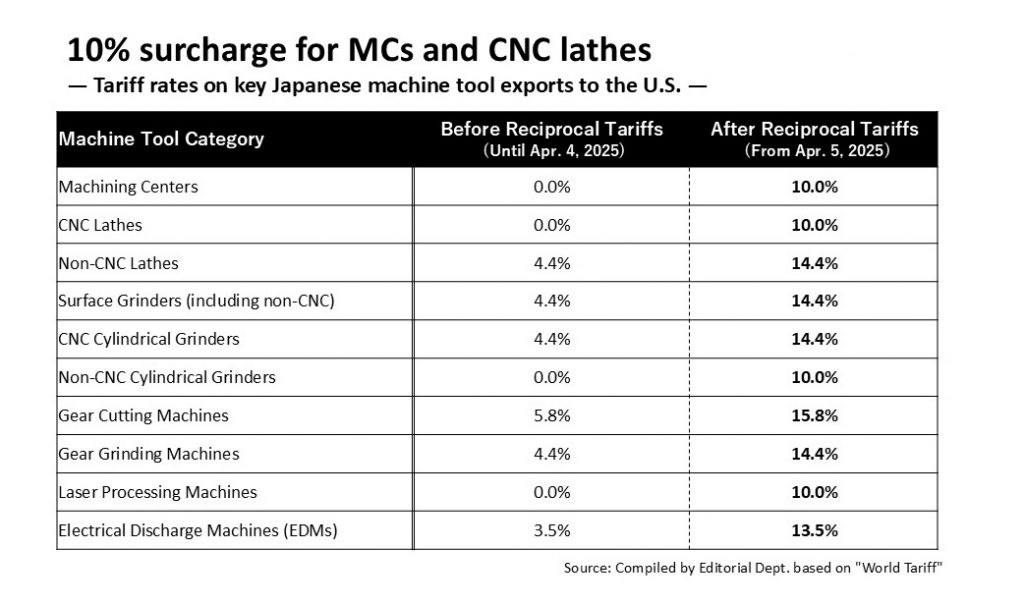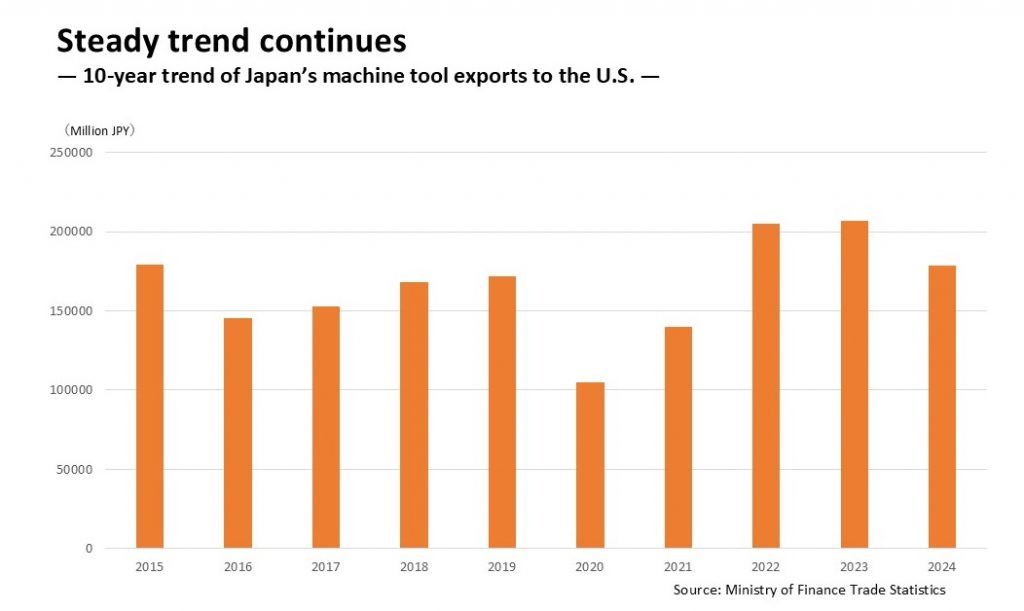
- News
- Basics
- Products
- JP Job shop
- Exhibition
- Interview
- Statistic
- PR
- Download
- Special contents
News
April 18, 2025

By: Atsushi Kuwasaki, Staff Editor, SEISANZAI Japan
The Japanese machine tool industry is facing growing concerns following the latest U.S. tariff policy introduced under the Trump administration. As of April 15, a 10% surcharge has been added to the original tariff rates for each machine tool category exported to the U.S. The abrupt policy shifts have raised fears that fluctuating export prices could dampen capital investment demand in the U.S. market.
On April 5, the Trump administration announced a flat 10% surcharge on all imported goods, regardless of country or region. Just four days later, on April 9, the U.S. implemented another policy imposing reciprocal tariffs on countries with large trade surpluses with the U.S. Japan was expected to face an additional 24% surcharge under this measure. Within half a day, however, the administration reversed this decision and announced a 90-day suspension of the reciprocal tariff. As of April 15, only the 10% additional tariff remains in effect.
The Trump administration’s unpredictable and shifting tariff decisions have disrupted the global economy. The situation remains fluid, and further developments may have already occurred by the time this article is published.
For Japan’s machine tool industry, the U.S. is the second-largest export destination after China. The Trump administration’s tariff measures thus have a substantial impact.
According to trade statistics from Japan’s Ministry of Finance, major exports to the U.S. include horizontal and vertical machining centers (MCs), CNC lathes, and laser processing machines. Under the Japan-U.S. Trade Agreement enacted in 2020, these items were subject to 0% tariffs, until April 4. Other machines, such as surface grinders and CNC cylindrical grinders, had previously faced tariffs of 4.4%, and EDMs (electrical discharge machines) 3.5%. From April 5 onward, at least through early July when the 90-day suspension of reciprocal tariffs is set to expire, these machine tools are now subject to their original tariff rates plus an additional 10% surcharge.
Although the U.S. market has remained relatively steady—driven by aerospace and recent demand for large, high-end machines—Japanese machine tool builders are expected to review their U.S. business strategies in response to rising costs.
An executive from a mid-sized Japanese machine tool builder said, “Since the tariffs have been implemented, we expect to see a cooling of capital investment in the U.S. market. Export prices from Japan and other Asian countries are becoming more volatile, creating a more difficult business environment.” 
While on the surface the new tariffs may seem to benefit U.S. machine tool builders by making foreign competitors less competitive, many of them rely on key components imported from Japan and other countries. These imports are now also subject to the 10% surcharge, exposing U.S. manufacturers to similar cost pressures and supply chain risks.
September 19, 2024
December 18, 2025